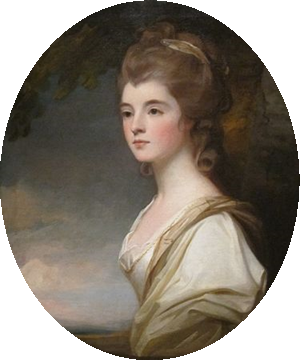Duke of Sutherland is a title in the Peerage of the United Kingdom which was created by William IV in 1833 for George Leveson-Gower, 2nd Marquess of Stafford. A series of marriages to heiresses by members of the Leveson-Gower family made the Dukes of Sutherland one of the richest landowning families in the United Kingdom. The title remained in the Leveson-Gower family until the death of the 5th Duke of Sutherland in 1963, when it passed to John Egerton, 5th Earl of Ellesmere.
A duke (male) or duchess (female) can either be a monarch ruling over a duchy or a member of the nobility, historically of highest rank below the monarch. The title comes from French duc, itself from the Latin dux, 'leader', a term used in republican Rome to refer to a military commander without an official rank (particularly one of Germanic or Celtic origin), and later coming to mean the leading military commander of a province.
I could not identify which Duchess of Sutherland the tune refers to. The Duchesses of Sutherland were:
- Elizabeth Leveson-Gower, Duchess of Sutherland (17651839) - shown above
- Harriet Sutherland-Leveson-Gower, Duchess of Sutherland (18061868)
- Anne Sutherland-Leveson-Gower, Duchess of Sutherland (18291888)
- Eileen Sutherland-Leveson-Gower, Duchess of Sutherland (18911943)
The 1st Duke and Duchess of Sutherland Elizabeth Levenson-Gower remain controversial for their role in the Highland Clearances, when thousands of tenants were evicted and resettled in coastal villages. This allowed the vacated land to be used for extensive sheep farming, replacing the mixed farming carried out by the previous occupants. This was part of the Scottish Agricultural Revolution. The changes on the Sutherland estate were motivated by two major objectives. The first was to increase the rental income from the estate: sheep farmers could afford much higher rents. The second was to remove the population from the recurrent risks of famine. Historical opinions differ on the relevance and severity of famine years, but most do not dispute that the Highland region remained the only part of mainland Britain that was affected in this way at this time.
Harriet Elizabeth Georgiana Sutherland-Leveson-Gower, Duchess of Sutherland (née Howard; 21 May 1806 27 October 1868), styled The Honourable Harriet Howard before her marriage, was Mistress of the Robes under several Whig administrations: 18371841, 18461852, 18531858, and 18591861; and was a great friend of Queen Victoria. She was an important figure in London's high society, and used her social position to undertake various philanthropic undertakings including the protest of the English ladies against American slavery.
Anne Sutherland-Leveson-Gower, was Duchess of Sutherland (21 April 1829 25 November 1888), 1st Countess of Cromartie in her own right and known as the Marchioness of Stafford from 1849 to 1861.
Eileen Sutherland-Leveson-Gower, Duchess of Sutherland (3 November 1891 24 August 1943), born Lady Eileen Gwladys Butler and styled Marchioness of Stafford from 1912 to 1913.



